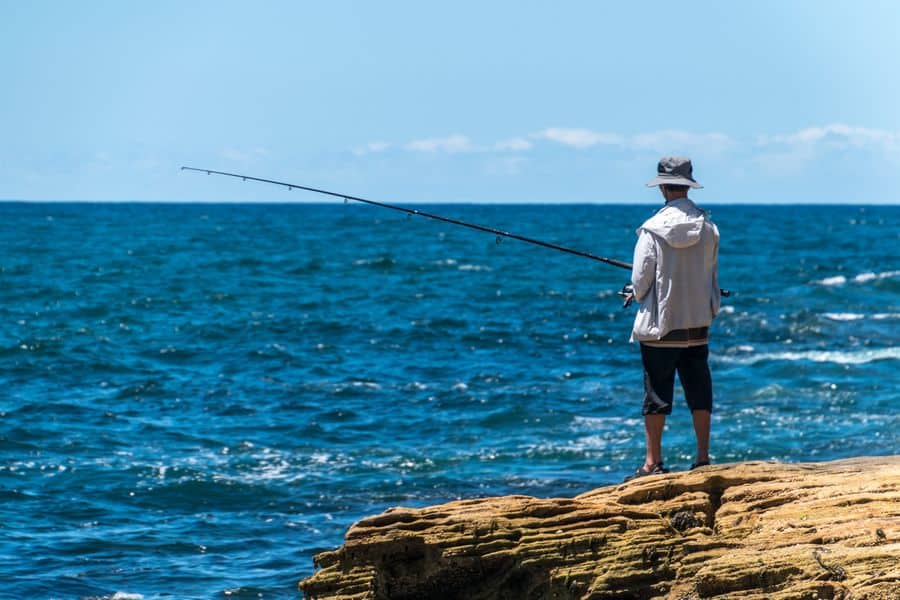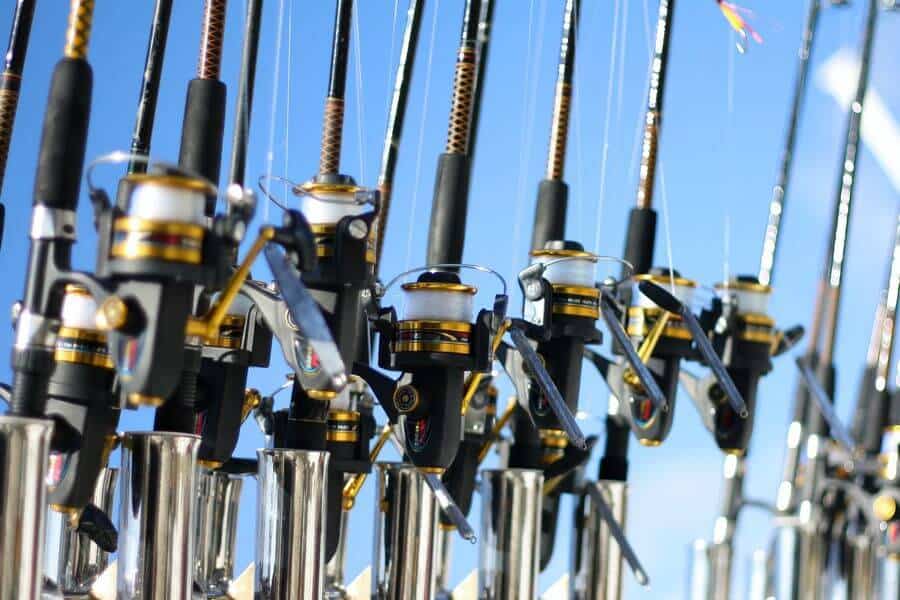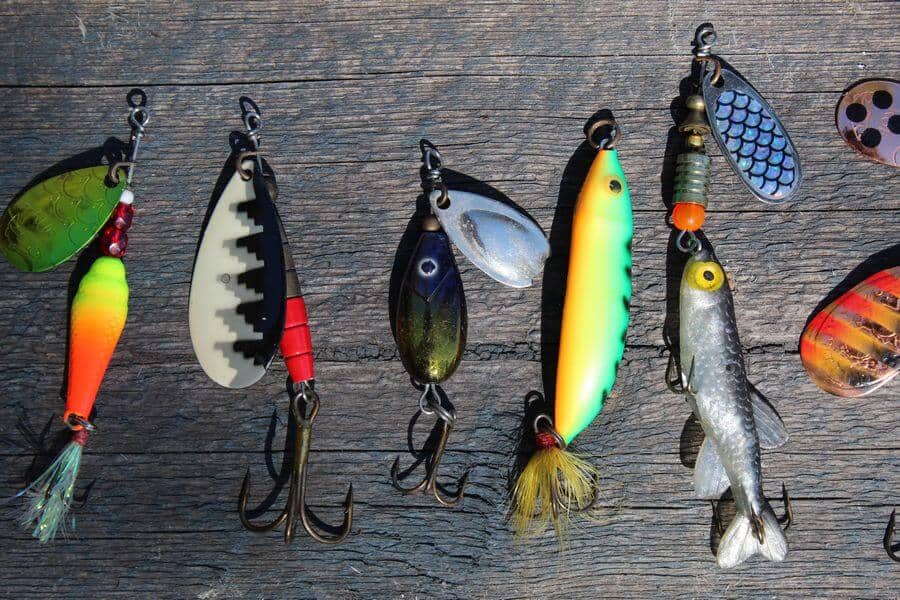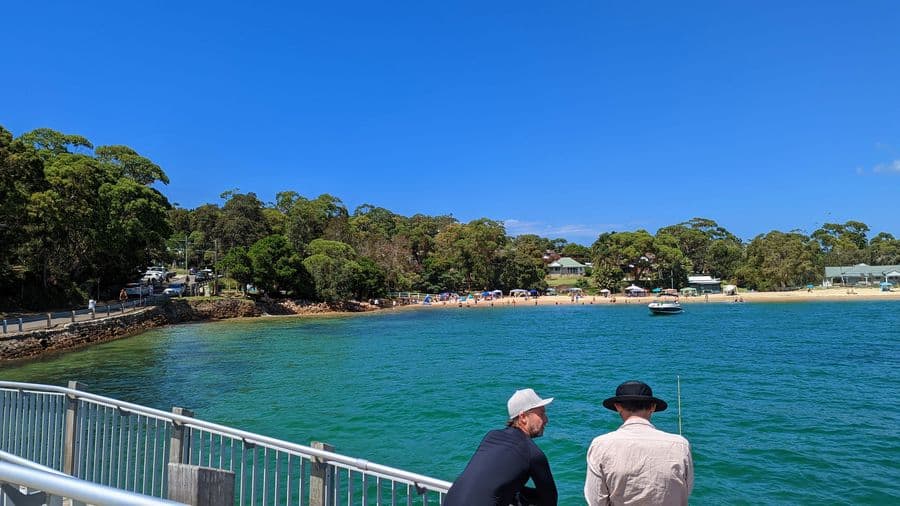Having the right fishing gear for any fishing escapade in New South Wales is essential for a successful and enjoyable experience. But before you go out and purchase everything on the fishing tackle shop shelves, it’s critical to know the fishing regulations 
One such regulation is the limit on how many fishing rods each person can use.
In NSW, the permitted number of fishing rods per person at any time is four. There is also a maximum of three hooks (or gangs of hooks) attached to each line. Any rods left unattended must be labelled with the person’s name and contact details or boat registration number for easy identification.
This article provides an overview of the fishing rod limit in NSW, other fishing regulations, and some top tips on choosing the right fishing rod for your next trip. Buckle up, and let’s get into it!
Why Is There A Limit On Fishing Rods In NSW?
Imposing a limit on fishing rods in NSW helps prevent overfishing and protects the aquatic environment. It also ensures that everyone has a fair chance of catching fish and that anglers aren’t taking advantage of the system.
Overfishing

The DPI imposes strict limits on the number of fish caught and kept and the type and size of gear that can be used. These measures are in place to protect fish stocks and ensure sustainable fishing for future generations.

Consequences Of Having Too Many Fishing Rods
If you’re caught using more than the allowed number of fishing rods in NSW, you may be issued an on-the-spot fine or a penalty notice of $500
Being aware of the fishing rod limit helps ensure you stay within the legal limit when out on the water. Any altercations with the authorities will turn your fishing trip sour real quick, so it’s best to be on the safe side and stick to the four-rod limit.
Tips For Choosing The Right Fishing Rod
A fishing rod is the foundation of your angling setup, so it’s essential to choose one suited to your fishing style and the type of fish you’re targeting. Quality counts when it comes to fishing rods especially when you must follow rod limits so don’t be afraid to invest in a good one.
Here are some tips to help you choose the right fishing rod:

Choose An Appropriate Rod Length
The rod’s length directly impacts its casting ability, fish-fighting power, and overall sensitivity. Rod lengths range from 4 to 14 feet (1.22 to 4.27 m), so it’s essential to choose one appropriate for the type of fishing you’ll be doing.
Generally, the longer the rod, the further you can cast. But longer rods can be more challenging to control, and they may not be suitable for certain fishing techniques. Shorter lengths allow you more control but are limited in the distance they can cast.
A 7-foot (2.13 m) rod is a good all-around length that balances casting ability and control.
Be Aware Of Rod Action
The action of a rod refers to how much it bends when pressure is applied to the tip. There are three types of rod action: fast, medium, and slow.
- Fast action rods bend near the tip and are sensitive to bites, making them ideal for detecting light bites and setting hooks quickly. Their strong backbones and fast-moving tips give you the power to fight fish effectively.
- Medium action rods have a moderate amount of flex and are versatile for various fishing techniques. They bend in the top half of the rod and have good hook-setting power. However, they are slower than fast action rods but work well with multiple-hook baits.
- Slow action rods have a lot of flex and are great for fishing with live bait. These bend to the butt, so they’re very forgiving when setting the hook. The slow action allows fish to eat the bait before feeling any resistance, making it less likely that they’ll spit the hook. They are excellent for catching panfish and other small critters.

Select The Right Fishing Rod Power
The power of a rod refers to how much weight it can lift and the type of fish it can handle. Heavier rods are better for fighting big fish, while lighter rods are more delicate and better suited for smaller fish.
These are the lists of fishing rod powers:
- Ultralight
- Light
- Medium
- Medium-heavy
- Heavy
- Ultra-heavy
Pick a rod with the appropriate power for the type of fish you’ll be targeting.
Select The Right Rod Material
Fishing rods are usually made from one of three materials: fibreglass, graphite, or composite.
- Fibreglass: As the oldest and most reliable material in this list, fibreglass is strong, durable, and has a good balance of flex and sensitivity. It’s affordable and relatively easy to make. However, rods made of fibreglass are heavy, making them less ideal if you’re battling a heavy fish for a long time.
- Graphite: Graphite is lighter and more sensitive than fibreglass, making it a good choice for anglers who want a well-balanced rod. Unfortunately, this material is also more expensive than fibreglass and is more brittle, so it can break more easily.
- Composite: Composite rods are a mix of graphite and other materials, offering flexibility and versatility. These rods are strong and sensitive, making them a good choice for anglers who want the best of both worlds. However, composite rods are the most expensive type of rod on the market.

Other Fishing Regulations In NSW
Being a mecca for fishing activities due to the abundance of fish and waterways, it’s no surprise that NSW has a long list of fishing rules and regulations. In addition to the limit on fishing rods, other common laws are as follows:
- Fishing license: You need a recreational fishing license to fish in NSW. You can purchase a recreational fishing license online through the NSW government website
or from a local fishing agent.
- Prohibited fishing gear: The use of Opera House nets, cast nets, as well as other fish nets and traps in trout-infested waters, is banned and can attract a maximum fine
of $22,000.
- Bag and size limits: There are different bag and size limits
for different types of fish. The maximum daily limit in NSW is 20 per person for most fish, with a maximum of 10 for some species.
Final Thoughts
The recommended number of fishing rods per person in NSW is four. This helps prevent overfishing and ensures anglers can fish safely and within the law.
When selecting a fishing rod, consider the type of fish you’ll be targeting and the power and material of the rod. Lastly, make sure to obtain a recreational fishing license before heading out on your fishing trip.
Resource Links To Products We Use And Recommend
More Pages On Other Areas
These small jetties provide opportunities for various recreational activities, such as fishing, photography, and taking leisurely strolls to enjoy the bay's natural beauty. They are also great places...
Just opened on August the 25th 2023 in Hervey Bay is the new Golfing attraction offering 18 holes of fun for all ages! They offer the locals something new to do in Hervey Bay! Mini Golf Hervey Bay...


